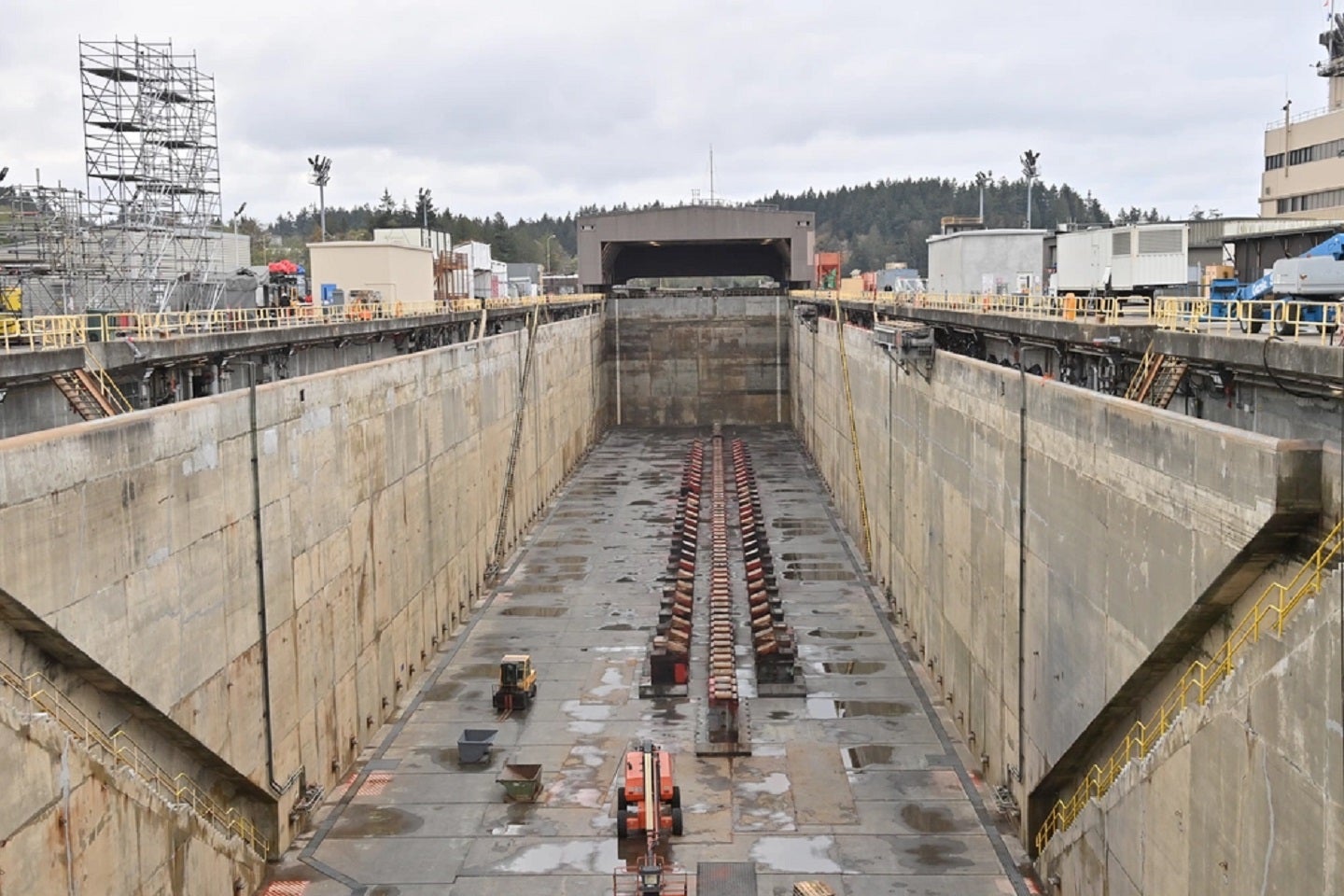
As expressed in the President’s FY 2024 Budget on the 13 March, the US Department of Defense (DoD) delivered on its promise to modernise and maintain the country’s naval industrial base. The US Navy (USN) works to ensure its building facilities run parallel with increased procurement demands in the current security climate.
Matching its industrial facilities with the need for new capabilities through the Shipyard Infrastructure Optimisation Programme (SIOP), the USN will manage to keep up with the growing demand for ships, weapons and equipment amid the current security emergency, in which “the People’s Republic of China is our pacing challenge”.
The USN has awarded Kiewit-Alberici SIOP MACC JV a $30m modification to a previously issued task order on 24 March to take risk mitigation measures for its shipyards as part of its efforts to shore up its SIOP. The modification would prevent potential seismic events that threaten Dry Docks 4 and 5 at Puget Sound Naval Shipyard and Intermediate Maintenance Facility, and the Trident Refit Facility Dry Dock at naval Submarine Base Bangor.
This award brings the total maximum value of the task order to $161,800,137. Work will be performed in Washington and is expected to be completed by June 2023.
Trident missile production
One naval capability that the USN’s SIOP caters for is the Trident II (D5) missile production. This type of nuclear submarine-launched ballistic missile (SLBM), which are launched from nuclear-powered ballistic missile submarines (SSBN), are imperative to the continuous nuclear deterrence at sea.
The nuclear missile deterrence strengthens the naval capabilities of the Royal Navy, as well as the USN and other partners patrolling international waters to support the rules-based order. The missile is used on the UK’s Vanguard-class SSBNs, as well as the USN’s Ohio-class SSBNs.
In fact, the DoD has also recently invested in the control and fire systems for the Trident on 22 March, and exercised options for Trident missile production on 24 March. Modernisation and maintenance efforts for the Trident Refit Facility will help to ensure the smooth production process of these recently procured Trident missiles for both the US and the UK by September 2027.
New demands require new methods
The FY 2024 Budget has allocated $2.3bn to the SIOP, which the Deputy Assistant Secretary of the Navy for Budget, Rear Admiral John Gumbleton, stated: “There’s also strategic outsourcing to bring on new companies to do work in the shipyards. And then there’s the shipyards themselves need some investment in — not material but I think robotics and the kit they need to be more efficient”.
The USN will begin to diversify its industrial supply chain by contracting new methods like robotics to streamline the production process.
According to GlobalData, there is an increasing demand for automation across all sectors, combined with developments in artificial intelligence (AI), which will drive robust growth in the robotics market. In 2020, the global robotics market was worth $45.3bn. By 2030, it will have reached $568.1bn, experiencing a 28.8% compound annual growth rate across the decade.
Beyond the skepticism surrounding overstated capabilities, robotic innovation is taking place at a rapid rate. As geopolitical tensions rise, this technology will undoubtedly gain prominence within defence budgets, just as the USN looks to integrate these new methods of production as GlobalData expects robotics to have great disruptive potential for defence as this technology offers a way to increase manufacturing efficiency on the factory floor.




